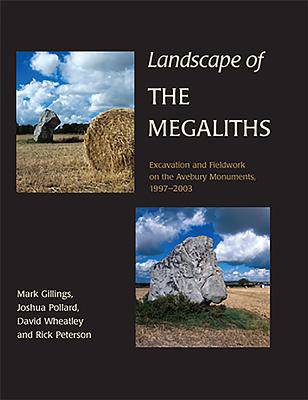
Je cadeautjes zeker op tijd in huis hebben voor de feestdagen? Kom langs in onze winkels en vind het perfecte geschenk!
- Afhalen na 1 uur in een winkel met voorraad
- Gratis thuislevering in België vanaf € 30
- Ruim aanbod met 7 miljoen producten
Je cadeautjes zeker op tijd in huis hebben voor de feestdagen? Kom langs in onze winkels en vind het perfecte geschenk!
- Afhalen na 1 uur in een winkel met voorraad
- Gratis thuislevering in België vanaf € 30
- Ruim aanbod met 7 miljoen producten
Zoeken
Landscape of the Megaliths
Excavation and Fieldwork on the Avebury Monuments, 1997-2003
Mark Gillings, Joshua Pollard, Rick Peterson, David Wheatley
Paperback | Engels
€ 63,95
+ 127 punten
Omschrijving
This volume describes the results of the Longstones Project, a joint-universities programme of excavation and survey designed to develop a fuller understanding of the context and dynamics of monument construction in the later Neolithic (3rd millennium BC) of the Avebury region, Wiltshire. Several elements of this internationally important prehistoric monument complex were investigated: an early-mid 3rd millennium BC enclosure at Beckhampton; the recently re-discovered Beckhampton Avenue and Longstones Cove; a section of the West Kennet Avenue; the Falkner's stone circle; and the Cove within Avebury's Northern Inner Circle. The research sheds new light on the complexities and development of this monument rich area and consideration is given to the questions of how and why ceremonial centres such as that at Avebury came into being in the 3rd millennium BC. The importance of understanding the agency - the affective and perceived inherent qualities - of materials and landscapes is stressed; and the unusual character of the Wessex monument complexes is highlighted by comparison with the format and sequences of other ceremonial centres in southern Britain. The second part of the monograph tracks the later, post-prehistoric, lives of Avebury's megalithic monuments including a detailed account of the early 18th-century records of the Beckhampton Avenue made by the antiquary William Stukeley.
Specificaties
Betrokkenen
- Auteur(s):
- Uitgeverij:
Inhoud
- Aantal bladzijden:
- 402
- Taal:
- Engels
Eigenschappen
- Productcode (EAN):
- 9781842179710
- Verschijningsdatum:
- 1/03/2010
- Uitvoering:
- Paperback
- Formaat:
- Trade paperback (VS)
- Afmetingen:
- 216 mm x 272 mm
- Gewicht:
- 1428 g

Alleen bij Standaard Boekhandel
+ 127 punten op je klantenkaart van Standaard Boekhandel
Beoordelingen
We publiceren alleen reviews die voldoen aan de voorwaarden voor reviews. Bekijk onze voorwaarden voor reviews.









